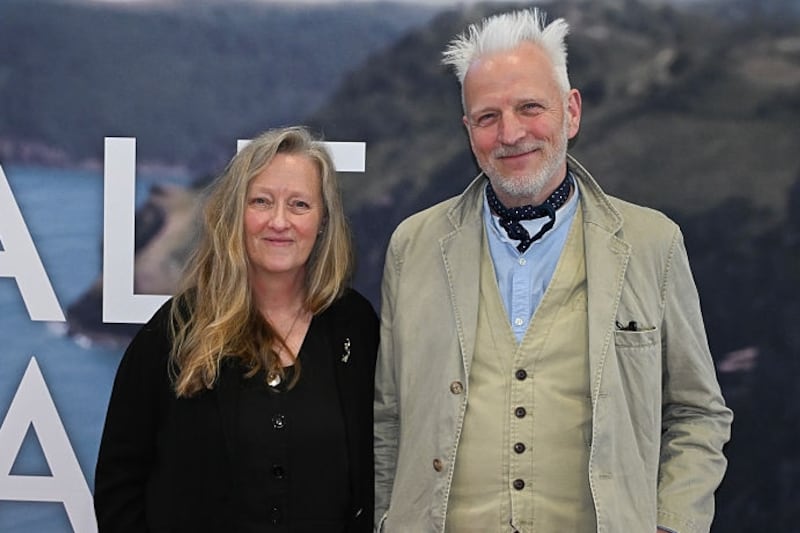There is a place in west Cork where you find a Georgian rectory, a Famine road, and Béal na mBláth, all in one place. It is known for the vibrancy of its green fields and ditches and hedgerows, for wild garlic and bluebells in the spring, and the red, orange, and purple of fuchsia, montbretia, foxglove, and rhododendron in the summertime.
It is where some of the most violent and deadly events of the Irish War of Independence and Civil War played out and we can count ourselves lucky to have writers such as Elizabeth Bowen, Seán Ó Faoláin, Julia O’Faolain, John McGahern and William Trevor to guide our way in coming to terms with this history and its aftershocks. There is a consolation to be found in the work of these writers that is not available in the abstractions of history.
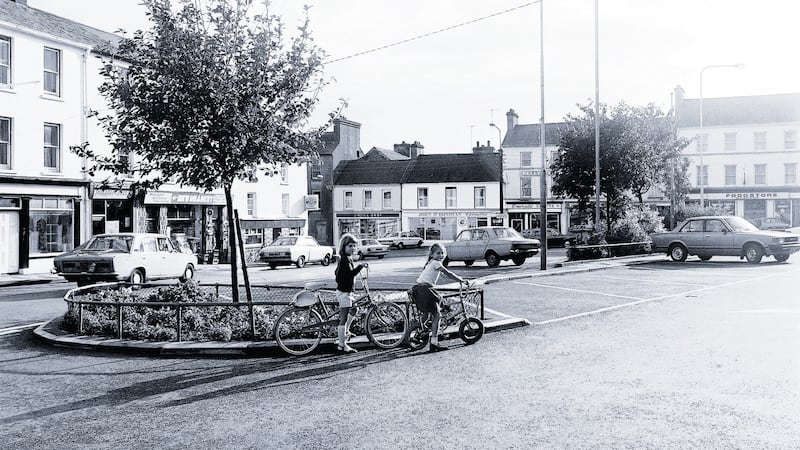
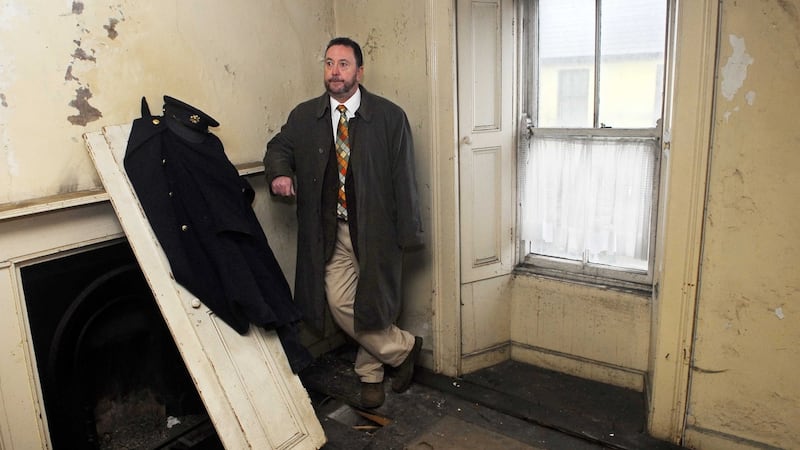
The same square miles are also the home of a series of events that took place in April 1922, an atrocity historians refer to as the Dunmanway Massacre. It is one of the major historical controversies of the Irish Free State. The facts of the history are this: between April 26th and 28th, 1922, 13 Protestant men and boys were murdered or disappeared in the townlands around Bandon, Enniskeane, Dunmanway and Clonakilty.
Historians of this period have never been able to decide whether these Irish Republican Army killings in the feverish and fragile post-truce period can be attributed to sectarianism, political reprisal or an attempt to ward off any threat of British re-occupation. I have only just recently tried to read these carefully-reasoned arguments, but only ever end up thinking how little they must matter to the descendants of the victims of the massacre.
When I try to read and understand the history of the Dunmanway Massacre, and the tumultuous events of 1921 that led up to it, I can only push past the clinical historical analysis, turn away from the unbearable detail of how these men died, and search out the story of who they were in life.
The eldest of the men was in his 80s and the youngest was a boy of 16. They were part of a community that had historically enjoyed good relations with their Catholic neighbours. Many of them came from families that spoke Irish as well as English. They were drapers, chemists, solicitors and farmers. A few of them had Catholic servants. While many families fled after the events of April 1922, some later returned, and others stayed in west Cork.
I cannot speak for the descendants of the community that lost so many of its men to the Dunmanway Massacre, and to the events that led up to it in 1921, but I can speak of them because I grew up in those square miles in the 1980s and they were among the people who helped to raise me. They were the neighbours and friends who greeted any luck that came my way with the pleasure of an aunt or an uncle and are some of the first people I call to see when I go home.
And yet, somehow, it took me half a lifetime to encounter the full details of the events of April 1922 and, for all my supposed academic training and that I teach modern Irish literature at a British university, to see the history that was so close to home.
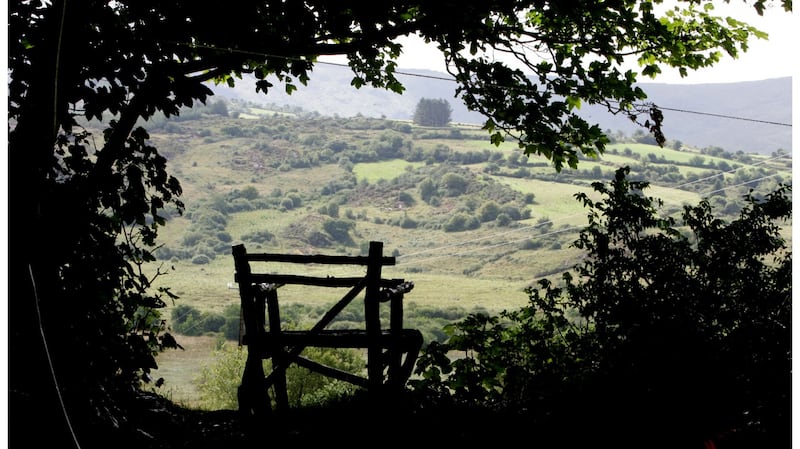
In trying to write about this, I have asked myself – who am I to speak? In examining these agonising histories, who speaks matters and I traded one south west for another more than 20 years ago and this is not my story. But the silence, between families and close-knit communities, in this case, although it might seem to serve the dignified and honourable purpose of self-preservation, can also be painful and inflict further pain and injury on people who have already suffered enough.
The value of silence is something Irish writers have always appreciated, from James Joyce’s holy trinity of “silence, exile, and cunning” to Seamus Heaney’s gentle commandment in one of his best-known poems: “whatever you say, say nothing”. Looking back, I better understand the nature of such silence and the knowledge gained early on that to ask too many questions, to ask too much, was to risk causing hurt to the people you cared about and who cared about you.
But a child growing up in the 1980s – in this case, a Catholic child – had questions, nonetheless, about the mild-mannered separation of two communities on certain occasions. Though young children in that decade had only an uneasy, nervous sense of it, it was a time marked by the now familiar ideological warfare over Irish women’s bodies, the slow surfacing of unspeakable histories of institutional violence against innocent people, and a constant helpless stare turned North, afraid of what would happen next.
There was maybe nothing so unusual about the questions I carried around in my pocket. Why were there two small churches, two small schools, one for Catholics and one for Protestants, in such close proximity, when surely one might have housed us all?
After all the collective work of weeding, planting, painting, creosoting and baking, and the ritual and reward of unearthing your mother’s rose-patterned wedding china from the deepest drawer of the good press with the tenderness and care it deserved, when the day of hosting the Station Mass in the house – a ritual that traces back to the Penal Laws of the 18th century – finally made its way around the cycle of the parish and landed in our yard, with the joy of having all of our neighbours together under our roof – why was it some of our friends and neighbours joined the celebration late, when the priest had already finished the last prayers and folded his vestments away?
But then there were other questions, too, that surfaced as you trundled with plates of sandwiches between rooms on the day of the Station Mass – why did the men sit down to eat together at one table and the women and children at another?
At the National School at the four cross roads, the same one my father attended until his education was cut short at the tender-young age of 11, we were taught the history: Easter, 1916; Bloody Sunday, 1920; the insurrection and chaos of the revolution of 1919-1921; and Partition and the pain and sunder of Civil War that followed. But we did not spend so much time on the local, which takes in the familiar place names of Crossbarry, Kilmichael, and Dunmanway, and perhaps for good reason.
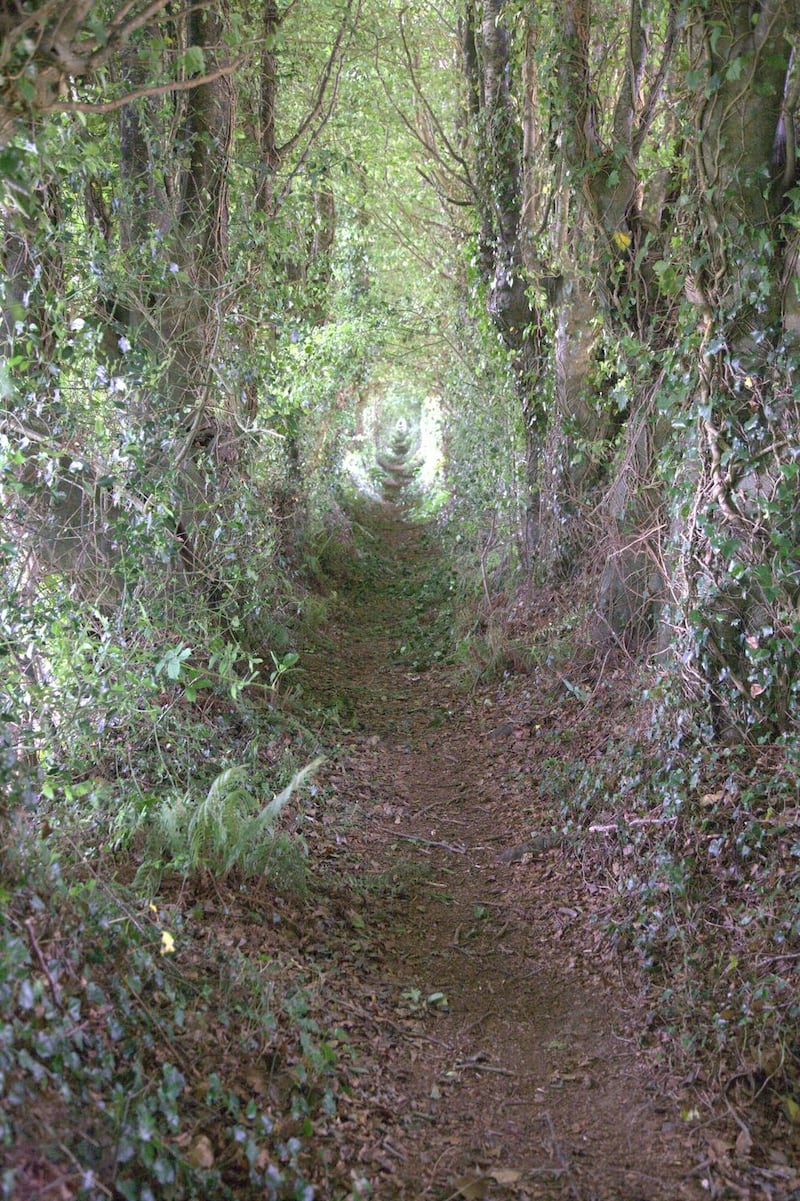
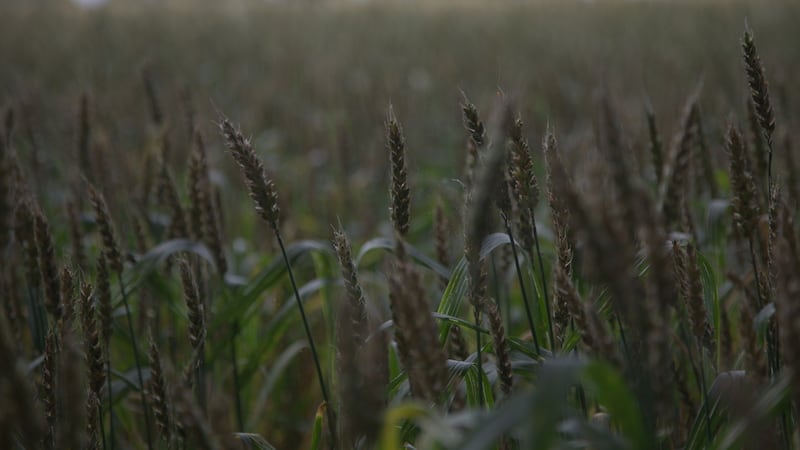
Instead, having ushered us as far as 1923, the Master, as we still spoke of him at that time, in his enlightened way, gently turned our attention to the medieval settlements in Ireland before moving on to the Brehon Laws, then backwards again to the more distant history of the ancient Mesopotamian City of Ur.
It may be that in the intimate details of the local history there was too much that was too close to home – the familiar family names that appear in this story of Irish Republican Army ambushes, the troubling history of civilian harassment and injury by the Black and Tans, the houses and homes sacked and set fire to by British soldiers in the middle of the night, and the litany of war crimes, the searing of flesh, disfigurement, torture, butchery, humiliation, and mortification of the bodies of too-near ancestors by the British Crown Forces.
Stories of still-close ancestral suffering can be difficult to face at any age. These shadowy ghosts crossed a generation – however stealthily we may have attempted to avoid them. So many families in that area, my own family included, have connections to the revolution of this period that we already knew enough, if not too much. My father was born in the mid-1930s and once told me that when he was a child, the history was still so close and raw, any time a memory of the Black and Tans came tumbling violently into the room, a kind of fear and dread rose up like dust from the floor.
But the story of revolution and the anguish, moral mayhem and storm and stress that attends it is one story – the story of the Dunmanway Massacre is another. I remember, having heard in the schoolyard that a man had once been shot in the fields near where we live, going out to pick blackberries and to worry, as I wandered past the haggard and crossed a lane, if this was the field that had taken a life? And there were other questions. If the story was true, where was the man’s grave? Did he have a wife or children? If he did, where were they now?
I once overheard fragments of a conversation about a house that had been stripped of its contents in what I now know, and the historians confirm, to be the aftermath of the events of April 1922, and there was something unbearable in the thought of rooms being looted and delicate objects and belongings that had been chosen with care or gifted with love being handled roughly and reduced to broken parts. The only recurring dream I can remember from my childhood is of furniture, chairs, tables, a dresser, a tall mirror, a clock, and a blur of delph sprouting feet and fleeing across the fields, away from the house where my family slept.
When I try to think about the events of April 1922, I can only really think about the unimaginable forgiveness and compassion that has followed in its wake. There is no broken prayer, no way of confessing to people in the community that raised you, on the centenary of these events, that language fails yet again in any attempt to say how sorry I am that such agony, loss, grief, and heartbreak was brought to your door.
The novelist Kurt Vonnegut is right to warn that “there is nothing intelligent to say about a massacre”, although the poet Leonard Cohen offers a more complicated possibility: “there is no decent place to stand in a massacre / but if a woman take your hand then go and stand with her”.
Either way, not saying anything does not mean it did not happen.
When I think about the descendants of the community turned upside down by the events of April 1922, I think of the neighbours and friends who were there for us, as we were for them, in the face of the many minor crises that you encounter in certain corners of rural Ireland where helping each other is what gets you safely through a hard winter, a summer drought or a sudden power cut, and the relief of a child when in the middle of such a crisis the reassuring smile of a familiar face appears in the yard.
These are small but sacred gifts of solidarity and kinship, the rituals in a minor key that such places depend upon. It is a world that has always had an unspoken understanding that the smallest act of kindness is worth more than the grandest intention.
The man who ran the store up the road next to the creamery greeted everyone who shopped there on a Saturday morning with a handsome-kind smile. He offered sweets from the glass jar on the counter to children who loitered while he carefully made up the grocery lists. Later, when he became ill, I went with my mother when she drove him to a hospital appointment, and sat quietly in the back of the car looking sadly at the nape of his neck, because he was now shook and frail, even if his good-natured smile was the same as it had always been.
A giant of a man, who always wore a straw hat in the summertime, he would come to cut corn in the field at the back of the house. I once dragged a net bag of tea and cake up the hill, struggling under the weight of it and under the burden of my own shyness and waited as his work-scarred hands, the kind that are so familiar in this part of the world – fingers injured from hitching a trailer or a plough and palms burnt by an acid spill from a tractor battery – poured tea from the flask and took the madeira cake from its tin foil. There was none of the teasing or condescension adults sometimes resort to when they try to coax words out of a quiet child. Instead we sat in the companionable silence of equals under the July sun until it was time for him to go back to his machine in the field and for me to pack everything up and go back down the hill.
When I think about the descendants of the families who suffered such loss in April 1922, I think about some of our closest neighbours at home and how they were among the first people I told that, after years of having nothing to report in response to gentle questions about whether we had any news, I was going to have a baby at the age of 39. They were among the first to hear that he was a boy and that his middle name was Harry, which is a name that matters to my husband’s family, but is also a name that settles gently in the lanes and fields where I grew up.
I was once part of a conversation my husband, who is an English Protestant, started in a neighbour’s kitchen over tea and biscuits about family histories. She poured the tea and answered my questions about the evangelical journeys of John Wesley on his horse and what followed was a relaxed trading of connections to the Church of Ireland, the Church of England, Presbyterianism, and the Methodist and Baptist Churches and, on my husband’s side of the family, to the Plymouth Brethren.
I later sent her a photo-postcard of our baby asleep in his pram outside the original home place and Methodist Church of John Wesley, which happens to be in the city of Bristol where we now live. I go back to the Church of Ireland chapel at Desertserges and the year when another neighbouring family invited us to Christmas Eve service there, in the days when I still had no knowledge of the events of April 1922. The glow of welcome and belonging in the Christmas candlelight is something I will not forget.
Not long after, in the graveyard of the Catholic church in Ahiohill, our friends who ran the local post office at the time came to greet us with their usual warmth and affectionately teased my husband that his visits home were so frequent these days, they hardly thought of him as English anymore. There is a monument next to the same church that remembers the bravery and loss of two young Irish Republican Army men, aged 22 and 24, who were captured from their beds and murdered by the British Crown Forces in a nearby field in the dawn hours of February 14th, 1921.
When I first met the man I later married, he was writing about the literature of the English Civil War and I was fascinated to discover that the English, having brought so much trouble to our door, had once had extraordinary troubles of their own. He entertained me with stories about the insurrection and suppression of exotic sounding political-religious sects as the Levellers, Diggers and Ranters and the interesting and mundane detail that Oliver Cromwell, the faceless monster of so many Irish childhoods, had only turned to king killing and murder in middle age and that before he had found his true vocation, had been a farmer on the East Anglian Fens, the Dutch-flat landscape we know well and have reason to visit often.
I was interested in this new history, but there was also something like solace in the knowledge that I had found someone who had studied the agony of revolution and its legacies with care. In the story of my profession, the grief-stricken history that hangs over the fields and lanes in the place where I grew up is of a kind the Medievalist, Early Modernist and Romanticist, and scholars of War, Religion and Emotion are best placed to examine closely in the hopeful search for empathy and understanding.
I have been thinking about all of this at a time when going home to the square miles that raised me is not possible because of the necessary precautions of a pandemic; trying to think about it in the intolerable noise of the Brexit identity wars, in which Ireland has too often seemed like little more than a hollow prop in the fantasies of Leave and Remain, when painful below-the-skin animosities have ruptured again, and there is reason to reflect, on occasion, that the history of anti-Irish racism in Britain has not always paused to care a great deal about the difference between an Irish Protestant and an Irish Catholic.
I remember an incendiary device in the form of a remark from a preening academic man so casually dropped on the floor at an institution I spent time at years ago, his glib salvo that “Edmund Spenser loved Ireland, he just didn’t like the people who lived there”, and the unapologetic laughter that followed.
Even then, of course, you said nothing, however much you might have craved permission to throw a rock or grenade in reprisal and in doing so honour restless ghosts – knowing how thirst-quenching it would be to at last break cover, to for once step beyond the pale, and how easy it would be to send the voices of imperialism in their different, chattering accents of privilege – voices that can seem unassailable given their shares in a misguided confidence that sometimes makes them dare to risk telling you the story of your own life as if you had not lived it – into shocked, baffled retreat. To set light to a tine bheag of your own as your Irish-speaking grandmother from Baile Bhúirne, the Town of the Beloved, would have said before the language was stolen from the next generation and to trace the arc of the slow swoon of justice and revenge that can only be drawn by the usually yielding and forgiving.
I have been trying to think about it at a time when conversations about the meaning of decolonisation have had centre stage in British universities, including the university where I work, as they revisit the history of empire, with its attendant chaos, displacement and dispossession, and look again at the unending violence of the transatlantic slave trade.
There have been times when the word decolonisation has come tumbling violently into the room, sending shards and splinters of glass flying, as I have listened in my familiar silence, and moments when I have had to shut my eyes because of the histories it raises and because of my recent but now complete discovery of what happened in the fields around Dunmanway and Bandon in April 1922.
In the schemes of imperial legacies, there is nothing in my own family history beyond what the language of my profession would call anti-colonial resistance: the hunger, sacrifice and suffering of women and men forged of steel and the loss and sadness of separation that so often follows in the wake of revolution – of family scattering to England, America and Canada and, in the case of one mourned loss, a life given to digging the subway tunnels of New York when he might have been at home working in the fields with his younger brother.
But a turn of the looking-glass quietly brings the harrowing and unavoidable reality of the Dunmanway Massacre into view, with its story of the murder of innocent men at the end of a lane. And yet it is more than that: it is also a story of pushing gently at the door of a seemingly impossible forgiveness and of how the generation that came before mine, with immeasurable and luminous grace and dignity, found a way of making a home for the laughter of their children on the scorched earth of a too-near history.
It has been over two years since we last went home to Enniskeane because, in light of the vulnerable age of my parents and our friends and neighbours, staying away just now is the most caring thing we can do. These are some of the people who matter most and I would never do anything to bring risk or pain to their door. News from home tells me that during the crises of the pandemic this is a community that has rallied, as it has always done, but with new and necessary precautions in mind – when called for, messages, groceries or the daily newspaper and sliced pan are left for anyone who needs them at the gate rather than being brought into the house. We can only hope it will not be too long before we see them again.
I have tried to write something that is both public and private because I know our small son, James – or Jamesie, as we call him, in the affectionate west Cork way – who continues to dedicate songs on his toy record player to the grandparents in Ireland he has not seen for so long, will one day have questions of his own, questions we will do our best to answer.
Sometimes when I put him to bed in the evening and wait and go back in to inhale his sleeping-boy shape, I make promises. When the time comes, we will tell him about the Levellers, Diggers and Ranters and explain who the young man in the portrait on our sitting room wall is and why Harry McWilliams was killed in action near the small Belgian town of Ypres, on March 28th in 1915. We will address the heart-wrenching wounds of history as tenderly as we can and with all the necessary precautions.
We will try to explain who Oliver Cromwell was and the unspeakable nature of his campaign in Ireland. We will find a way of telling him about Cromwell’s New Model Army and the massacre of Drogheda in 1649 and what happened in Portadown in 1641 and in Ballymurphy in 1971 and in Derry in 1972. When the time comes, I will step cautiously through the rooms of history and explain, if I can, what a Famine road is and how such an unimaginably abject thing came to be.
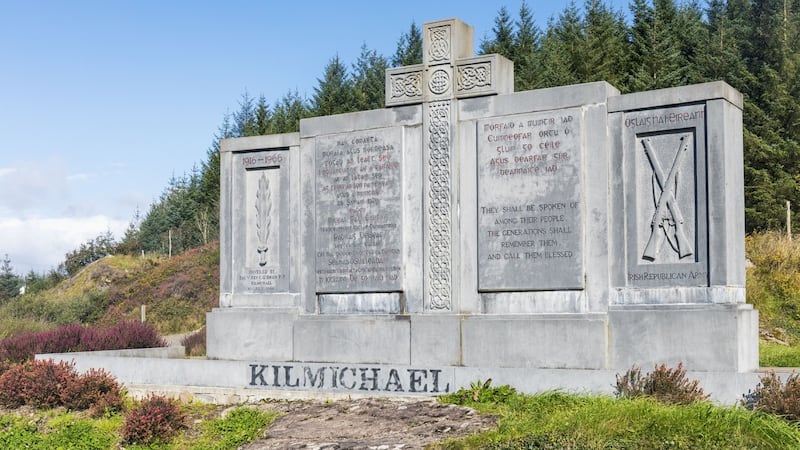
I will tell him about the Irish Republican Army in this period, his own family connections to the Irish War of Independence and Civil War of the 1920s, about the notorious cruelty of the Black and Tans, the burning of Cork, the ambushes and reprisals. I will do my best to explain what Northern Ireland, the Republic of Ireland and Partition mean. We will almost certainly drive past the monument to Michael Collins at Béal na mBláth in various speculative futures.
I will move slowly around the object lessons of history, as the poet Eavan Boland calls them, and handle their fragile, kaleidoscopic forms with the immense care and tenderness they deserve.
And I will also, as gently as is possible, tell him about what happened in the townlands of Bandon, Enniskeane, Dunmanway, and Clonakilty between April 26th and 28th in 1922.
Ellen McWilliams grew up in west Cork but now lives in England's West Country with her husband and young son. Dunmaway Fields is the prologue to a memoir-in-essays, Resting Places: On Wounds, War, and Revolution, about motherhood, kinship and belonging, delayed speech, rebellion and revolution, and the unending grief of the Irish 1920s.










